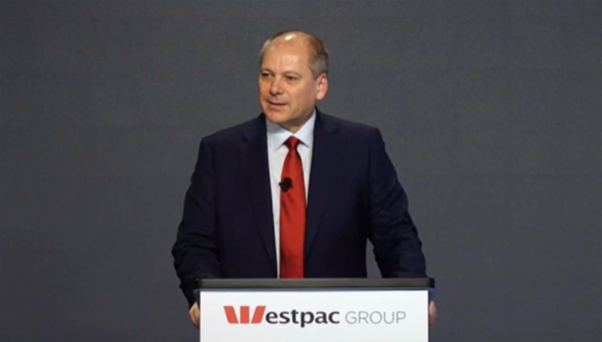Westpac is pushing forward with its simplification and digital goals as it boosts its cost base target to $8.6 billion.

The bank initially set a costs target of $8 billion by 2024 under its ‘reset’ plan, targeting savings through digitisation to simplify operations and reduce unnecessary expenses.
However, during its full-year 2022 results on Monday Westpac CEO Peter King said while the bank “made good progress in reducing costs” it noted “challenges in the environment” pushed the bank to adjust its cost base to $8.6 billion.
“Higher inflation is having a significant impact, along with the war for talent, which is also pushing up salaries.
“Last week, our employees endorsed our latest enterprise agreement with higher pay and a $1000 one-off payment for cost of living. This is just one of the examples of pressure in the system."
He said the bank is “committed to simplifying our business portfolio” and while “fixed programs are on track, we expect some costs to be required for longer”.
“We think $8.6 billion gets the balance right between productivity and the investments we need to make, and while we have updated the target for the environment, we still are seeking to deliver a step down in costs over the next two years.”
King added over the year it “completed seven business exits and reached agreement with Mercer for the super and asset management businesses” with the BT panorama modernisation process underway, “but there's nothing to update on today”.
“Banking simplification has also been moving forward,” said King.
“The new Westpac app is a step up in both capability and speed and this is helping customers to migrate to digital.
“This included digitising over 400 paper forms as well as contacting more customers through secure online messaging rather than via email.”
King said there’s “more to do with rolling out the app to third party brokers” plus scaling up its digital mortgage. This will also help customers refinancing as well as those shifting off fixed rates.”
King said he was “really pleased with our progress in digital” and the rollout of Westpac’s upgraded banking app, including the recent launch of new personal financial management tools, which fill what he called a “major functionality gap.”
Responding to investor questions King said he was “limited” into what he could disclose regarding Westpac’s acquisition talks with payments provider, Tyro.
King said the bank believes “payments is important”.
“We’re also looking into other options that can improve the offering to business customers around payments, so that’s the strategic thinking because we’re simplifying the portfolio we’ve got more ability to look forward.”
Promontory report
King said the bank released the sixth and seventh independent reviewer reports by Promontory Australia [pdf] which “confirm our progress whilst also acknowledging the work and commitment that is still ahead of us.”
The reports provide an updates on Westpac's integrated plan [pdf] to improve risk culture, governance, and accountability, and assess Westpac’s delivery, which is being implemented through its three-year Customer Outcomes and Risk Excellence (CORE) program.
The program comprises 19 workstreams, 83 deliverables with 350 activities. Westpac said it’s just over 18 months through the Program, and at 30 September 2022, the bank had submitted 241 activities to Promontory with 213 activities assessed as “complete and effective”.
In the latest Promontory report, it stated “much has been achieved in the program to date, with uplifts to existing frameworks and the implementation of new ones”.
However, it stated, “the challenges associated with resourcing and capability gaps continued during the reporting period, with the overall program health status for resourcing moving to amber and ‘on-watch’”.
It noted “the challenges have largely been driven by capacity constraints, as well as strain on existing subject matter resources in some areas” with Westpac “taking actions to address our concerns”.
The bank reached a statutory net profit of $5.694 billion, up four percent while its cash earnings dropped one percent to $5.276 billion.


_(22).jpg&h=140&w=231&c=1&s=0)

.png&h=140&w=231&c=1&s=0)
_(20).jpg&h=140&w=231&c=1&s=0)



_(26).jpg&w=100&c=1&s=0)

 iTnews Executive Retreat - Security Leaders Edition
iTnews Executive Retreat - Security Leaders Edition












_(1).jpg&h=140&w=231&c=1&s=0)



